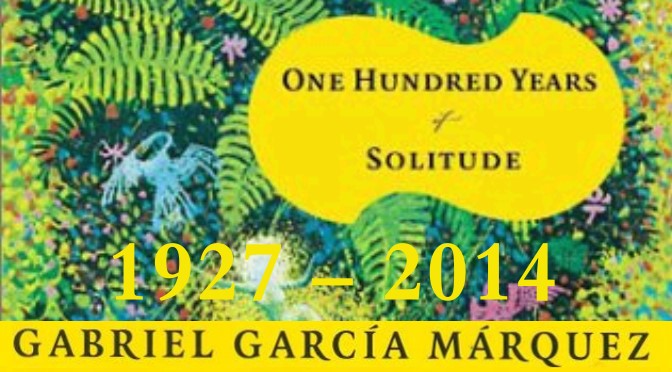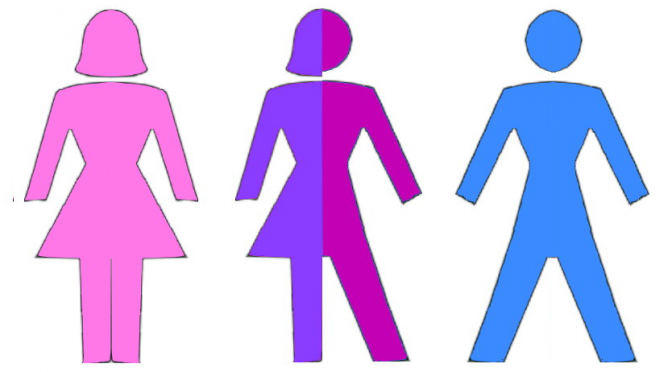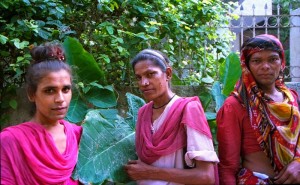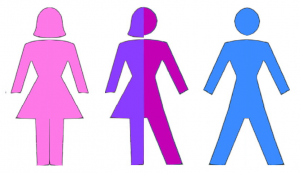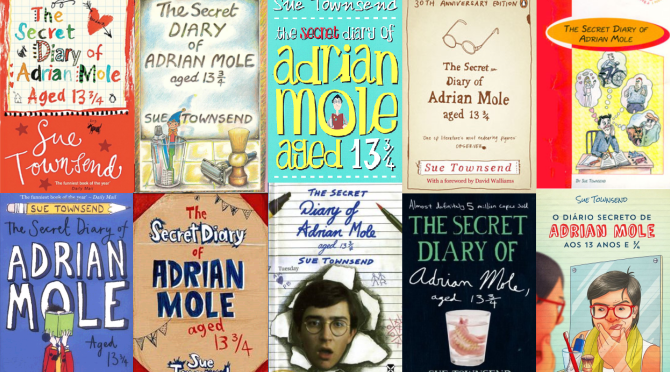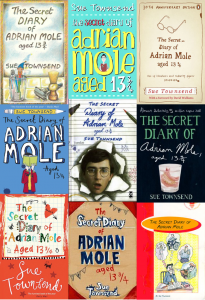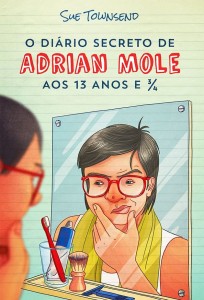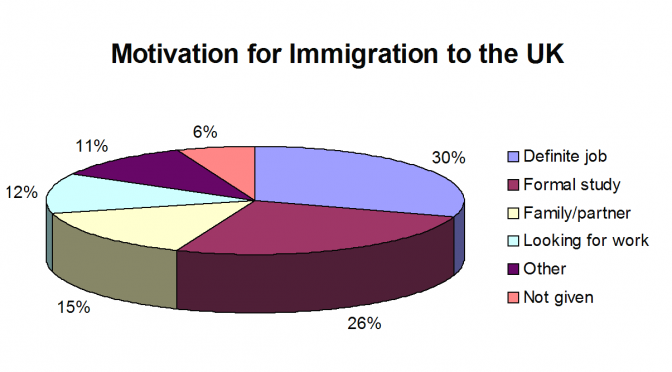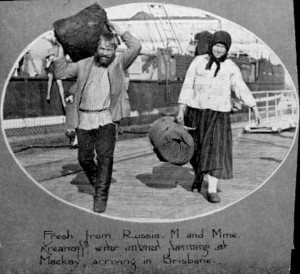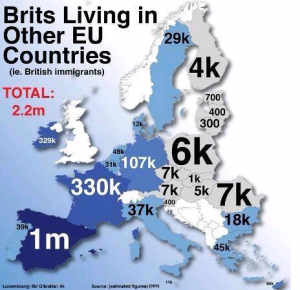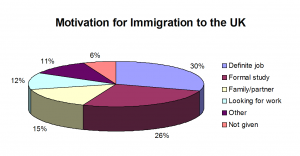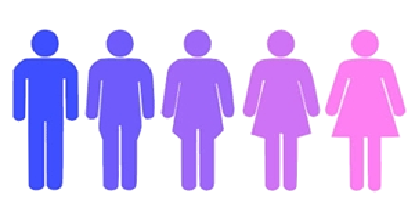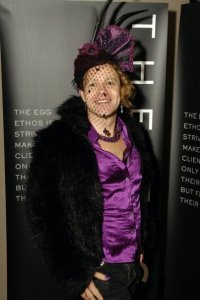The colourful Colombian Nobel novelist Gabriel García Márquez died in April at the ripe old age of 87 at his home in Mexico City. Although solitude was a recurring theme in his novels he leaves behind his wife of 56 years and two children. Gabriel José de la Concordia García Márquez, or Gabo, was born in March 1927 and at 45 he won the Neustadt International Prize for Literature and at 55 the Nobel Prize in Literature. He started out in law, but abandoned that for journalism and work as a foreign correspondent. He wrote for Bogotá’s El Espectador newspaper in the 1940s.
His literary style has been termed magical realism, a style that began in Latin American/Hispanic writing and which contains fantasy or unnatural elements in otherwise commonplace, mundane ordinary life. Think, Guillermo del Toro movies! No, not, Kung Fu Panda 2 but perhaps Pan’s Labyrinth (2006) or Cronos (1993). Surrealism, symbolism and subtle historical satire also make regular appearances as if works of surrealist art rendered in literary form.
As a result of this Spanish-language literature emerging from South America in the 1960s, it has also been called the Latin American Boom with such literary giants as Julio Cortázar, Carlos Fuentes, Mario Vargas Llosa and Gabriel García Márquez being key figures in its development and global renown.
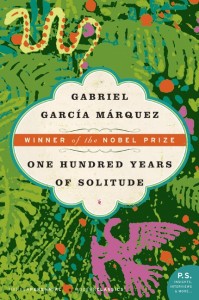 His most famous novel was One Hundred Years of Solitude (“Cien años de soledad”), published in 1967, and declared by a NY Times review to be “required reading for the entire human race” and the Guardian as “kaleidoscopically, mysteriously alive”. It has been translated into more than two dozen languages and sold tens of millions of copies.
His most famous novel was One Hundred Years of Solitude (“Cien años de soledad”), published in 1967, and declared by a NY Times review to be “required reading for the entire human race” and the Guardian as “kaleidoscopically, mysteriously alive”. It has been translated into more than two dozen languages and sold tens of millions of copies.
“It’s just a small thing to even call it a book. It is a whole universe that’s been created that you’re being asked to step into.” – Patricia Smith, Associate Professor of Creative Writing, City University of New York
The book begins with the family patriarch’s scion, the now Colonel Aureliano Buendía, looking back on his childhood whilst facing a firing squad. Very evocative of an older era of Hispanic revolutionary times. The description of the early village settlement of Macondo, nestled on the bank of a river containing “polished stones…white and enormous, like prehistoric eggs. The world was so recent that many things lacked names…” is Edenic and utopic. Then comes the mysterious Melquíades and his gypsies, inventions, alchemy and a secret manuscript that would remain undeciphered for 7 generations of the somewhat doomed to repeat history family – another Latin American trait, fatalism. As his biographer Gerald Martin told AP it was “the first novel in which Latin Americans recognized themselves, that defined them, celebrated their passion, their intensity, their spirituality and superstition, their grand propensity for failure”.
Salman Rushdie described it as the “greatest novel in any language of the last 50 years”, but it wasn’t just any language, it was Spanish – a language almost as suited as English to passionate expression, with so many evocative words and idioms. It is said that English has perhaps twice as many words at its disposal but that “doesn’t mean that it can’t be just as expressive as English; sometimes it is more so.”
“One feature that Spanish has when compared to English is a flexible word order. Thus the distinction that is made in English between “dark night” and “gloomy night” might be made in Spanish by saying noche oscura and oscura noche, respectively. Spanish also has two verbs that are the rough equivalent of the English “to be,” and the choice of verb can change the meaning (as perceived by English speakers) of other words in the sentence. Thus estoy enferma (“I am sick”) is not the same as soy enferma (“I am sickly”). Spanish also has verb forms, including a much-used subjunctive mood, that can provide nuances of meaning sometimes absent in English. Finally, Spanish speakers frequently use suffixes to provide shades of meaning.”
I remember trying to read a Márquez novel in a post-A level Spanish literary class, and needing a dictionary constantly in hand. Though that interrupted the the flow of the narrative and slowed the comprehension, I was no less enthralled by the beauty and colour of the language, readily understood or not.
Márquez has been described as “the most popular Spanish-language writer since Miguel de Cervantes in the 17th century” and as having “outsold everything published in Spanish except the Bible.”
Upon accepting the 1982 Noble Prize for Literature, Márquez situated his fictional writing firmly in the real, the political, the crucible of civil wars, revolutions, exiles, people ‘disappeared’, “between reality and nostalgia was the raw material for my work”:
“The country that could be formed of all the exiles and forced emigrants of Latin America would have a population larger than that of Norway. I dare to think that it is this outsized reality, and not just its literary expression, that has deserved the attention of the Swedish Academy of Letters [Nobel committee]. A reality not of paper, but one that lives within us and determines each instant of our countless daily deaths, and that nourishes a source of insatiable creativity, full of sorrow and beauty, of which this roving and nostalgic Colombian is but one cipher more, singled out by fortune. Poets and beggars, musicians and prophets, warriors and scoundrels, all creatures of that unbridled reality, we have had to ask but little of imagination, for our crucial problem has been a lack of conventional means to render our lives believable. This, my friends, is the crux of our solitude.”
The opening lines of Love in the Time of Cholera (“El amor en los tiempos del cólera”, 1985) are literally bittersweet:
“It was inevitable: The scent of bitter almonds always reminded him of the fate of unrequited love…his most sympathetic opponent in chess, had escaped the torments of memory with the aromatic fumes of gold cyanide.”
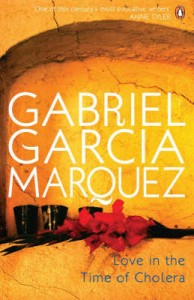 Written 18 years after One Hundred Years of Solitude, Love in the Time of Cholera is less fantastical but no less magical. Described as “a compelling exploration of the myths we make of love” by Barbara Hoffert, in the Library Journal, and the Independent wrote of it that “Few have written so passionately about the power of love”. The Daily Telegraph said of Márquez’ writing, that it was “Quite the nearest thing to sensual pleasure that prose can offer.”
Written 18 years after One Hundred Years of Solitude, Love in the Time of Cholera is less fantastical but no less magical. Described as “a compelling exploration of the myths we make of love” by Barbara Hoffert, in the Library Journal, and the Independent wrote of it that “Few have written so passionately about the power of love”. The Daily Telegraph said of Márquez’ writing, that it was “Quite the nearest thing to sensual pleasure that prose can offer.”
In all the apparent hopelessness of Latin American existence, he, nonetheless, writes of a triumph of hope over experience and celebrates love in its many forms, including lovesickness, and at every age, even in the twilight of our lives. He reached the twilight of his existence and will remain loved by his family, fellow Latin Americans, and avid readers from most every nation alive.
Colombian president Juan Manuel Santos said of Márquez that he was Colombia’s “most loved and admired compatriot of all time” and has announced three days of official mourning.
[This article was first published here]
Novels
- In Evil Hour (1962)
- One Hundred Years of Solitude (1967)
- The Autumn of the Patriarch (1975)
- Love in the Time of Cholera (1985)
- The General in His Labyrinth (1989)
- Of Love and Other Demons (1994)
Novellas
- Leaf Storm (1955)
- No One Writes to the Colonel (1961)
- Chronicle of a Death Foretold (1981)
- Memories of My Melancholy Whores (2004)
Short Story Collections
- Eyes of a Blue Dog (1947)
- Big Mama’s Funeral (1962)
- The Incredible and Sad Tale of Innocent Erendira and Her Heartless Grandmother (1978)
- Collected Stories (1984)
- Strange Pilgrims (1993)
Non-fiction Books
- The Story of a Shipwrecked Sailor (1970)
- The Solitude of Latin America (1982)
- The Fragrance of Guava (1982, with Plinio Apuleyo Mendoza)
- Clandestine in Chile (1986)
- News of a Kidnapping (1996)
- A Country for Children (1998)
- Living to Tell the Tale (2002)
